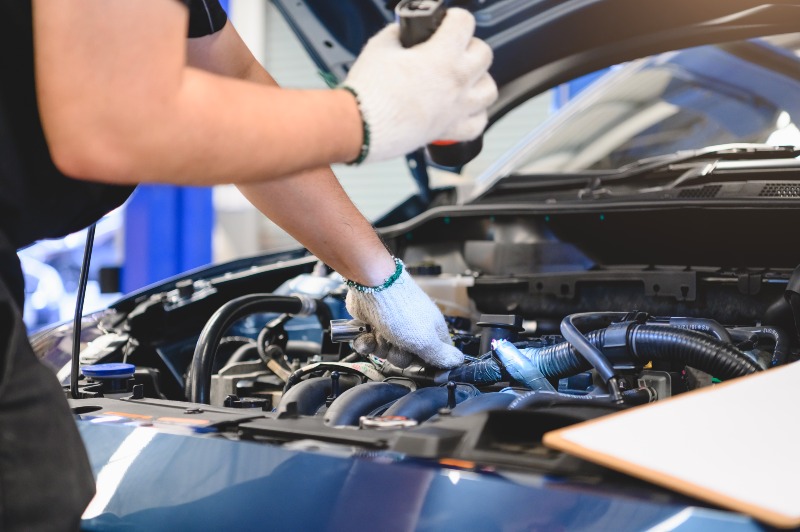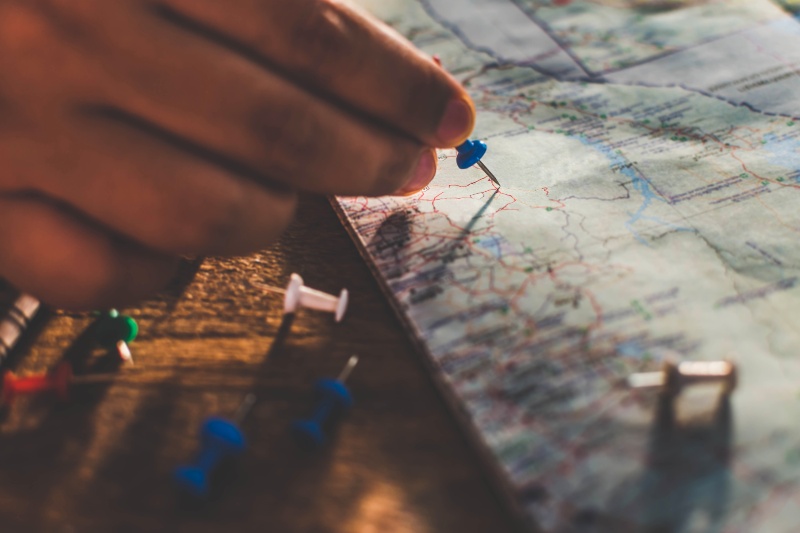Personal Safety
14 Must Have’s for Car Emergency Kit

A car emergency kit can help ensure your safety and survival in case of a vehicle breakdown. Here’s a rundown of the necessities you must include to build a reliable car emergency kit.
RELATED: Car Emergency Kit Essentials: How To Prep Your Car For A Disaster
Car Emergency Kit List | Essential Items You Should Keep in Your Emergency Car Kit
Click here to jump to the instructographic.
1. Flashlight and Extra Batteries

In case of mechanical failure at nighttime, a flashlight can help you examine what seems to be the problem. When there is no other available light source, this item is a safer option compared to exposed candles.
Additionally, be sure to keep spare batteries. If you’ll be stranded for days, you’ll need another power source as you might accidentally drain your car battery.
2. Bottled Water

You need water to survive. It is also essential to keep you healthy and wide awake especially during long trips.
Drinking water may not be available along the road especially during a disaster, so pack at least three days’ worth. However, keep in mind that extreme temperatures can affect its state. If you can, bring an extra item that you can use to purify it.
3. Non-Perishable Food

Like your bottled water, store preserved food supplies in your vehicle that can last for a minimum of three days.
Keep food items that do not need refrigeration and cooking. You can prepare canned goods, protein bars, and dried fruits. Select snacks with nutrients to provide you with the needed energy.
As much as possible, avoid packing meals that can dehydrate you. Also, take into consideration the dietary requirements and food allergies of your companions, including your pet.
Don’t forget to bring a can opener and utensils as well.
4. Blankets or Sleeping Bag

If your heater breaks down and it’s cold outside, a blanket or a sleeping bag can keep you warm. It’s a versatile tool that can serve many functions.
For instance, you can use it to cover your seats in case you need to transport heavy items.
Stow at least one blanket or sleeping bag for each seat in your vehicle so your family and friends can stay warm, too.
5. Whistle

This is one of the most crucial items you must have in your car emergency kit. A whistle provides a loud sound with minimal effort. The best thing is that you can use it endlessly since it doesn’t require power or a battery.
The sound that it produces signals rescuers that you need help. It catches their attention and helps them to locate you.
6. Pocket Knife

This multi-purpose item serves various functions. You can use it to start a fire, prepare your food, and repair your other gear items.
It can also help you during emergency situations. It can work as a survival tool and use it in first aid procedures. You can cut cloth to dress a wound or slice through a seatbelt in case of an accident.
7. Standard First Aid Kit

Travelling can be unpredictable. Mishaps can occur, so you have to be prepared. With this, a first aid kit is essential to a car emergency kit.
In case of minor injuries resulting from vehicle accidents, you have to disinfect any cut and stop its bleeding. Additionally, there should be bandages and tweezers included in your kit. Don’t forget to bring medications as well to relieve pain and treat allergies.
RELATED: Survival Emergency Car Kit | The DIY Kit That Could Save Your Life
8. Fire Extinguisher

A vehicle fire can cause burns or even fatal injuries. Car parts can burst, shooting scraps great distances. However, some car emergency kits fail to include fire extinguishers on the list.
It would be helpful to have a portable device on hand. The type that you should store in your car must be rated for class B or class C fires.
Should you use a fire extinguisher, do it from a safe, far distance. Be sure that you also have the means to quickly escape.
9. Jumper Cable

If suddenly your car won’t start, it’s probably because of accidentally discharged or dead batteries. Don’t worry, your jumper cables will come to the rescue. Add them to your car emergency kit so you can restart a vehicle battery and get back on the road.
However, before using a jumper cable, it’s best to familiarize yourself with your vehicle’s engine for your safety.
10. Duct Tape

Duct tape can help stop leaks in your vehicle and water bottle, and repair worn-out sleeping bags and torn clothing. You can also use it together with your first aid kit. It can make large bandages, add padding to blisters, and wrap your sprained ankle.
If you have broken car windows, you can also use duct tape to seal them. This piece can fix almost anything, yet it’s often overlooked.
11. Cell Phone Charger

When you’re out on the open road, most probably, you have your mobile phone with you, but don’t forget its charger. You’ll need to notify your family to get immediate help in case you get trapped, injured, or involved in an accident.
You also need to bring a power bank so you can charge your phone once your vehicle battery dies. Ensure that the power bank itself is charged.
12. Tire Gauge

A tire pressure gauge checks the air pressure of your car’s tires. It’s essential that you always keep your tires’ pressure at the optimal amount. Properly inflate all of them so they’ll last longer and to prevent blowouts.
Keep in mind to check the pressure of your spare tire as well. Most people often forget to realize that their spare tire might have low air pressure.
13. Reflective Triangles

When your car stops running, especially on a busy road, placing your reflective triangles can enhance your vehicle’s visibility. These will also warn approaching drivers of your car’s situation.
Set up your triangle reflectors around a 50-ft distance from your car. It’s also recommended that you use three reflective triangles. These will give people enough reaction time to avoid your vehicle and prevent further accidents and traffic jams.
14. Local Road Map

With the presence of a global positioning system (GPS), using a local road map may seem old school. However, similar to GPS, a map can also help you find alternate routes.
Additionally, when your smartphone dies, figuring out your direction traditionally is the way to go. With a map, you can still find your way home without using technology.
Here’s an instructographic guide. Don’t forget to download, save, or share this handy instructographic for reference:

Regardless of who is driving, you must be ready with a car emergency kit. Review your supplies now and make sure you have these items to save you.
Apart from your car emergency kit, you must also prepare a medicine kit in case of trauma situations. Watch this video by Overland Bound to know the needed medical gear:
Is your car emergency kit already prepared? Share with us what you’ve included in your pack in the comment section below! Up Next:
- How to Design and Create Your Own Emergency Car Kit
- Roadside Emergency Kit You Need In Your Vehicle
- Can You Eat Dandelions? Which Are The Edible Parts & How To Eat Them
Calling all preppers, craftsmen, bushmasters, outdoorsmen, and all-around skilled people, Survival Life needs YOU! Click here if you want to write for us.
Don’t forget to stay connected with us on Facebook, Twitter, Pinterest, and Instagram!
-

 Do It Yourself7 months ago
Do It Yourself7 months agoParacord Projects | 36 Cool Paracord Ideas For Your Paracord Survival Projects
-

 Do It Yourself9 months ago
Do It Yourself9 months agoHow To Make Paracord Survival Bracelets | DIY Survival Prepping
-

 Do It Yourself9 months ago
Do It Yourself9 months ago21 Home Remedies For Toothache Pain Relief
-

 Do It Yourself10 months ago
Do It Yourself10 months agoSurvival DIY: How To Melt Aluminum Cans For Casting
-

 Exports8 months ago
Exports8 months agoAre Switchblades Legal? Knife Laws By State

